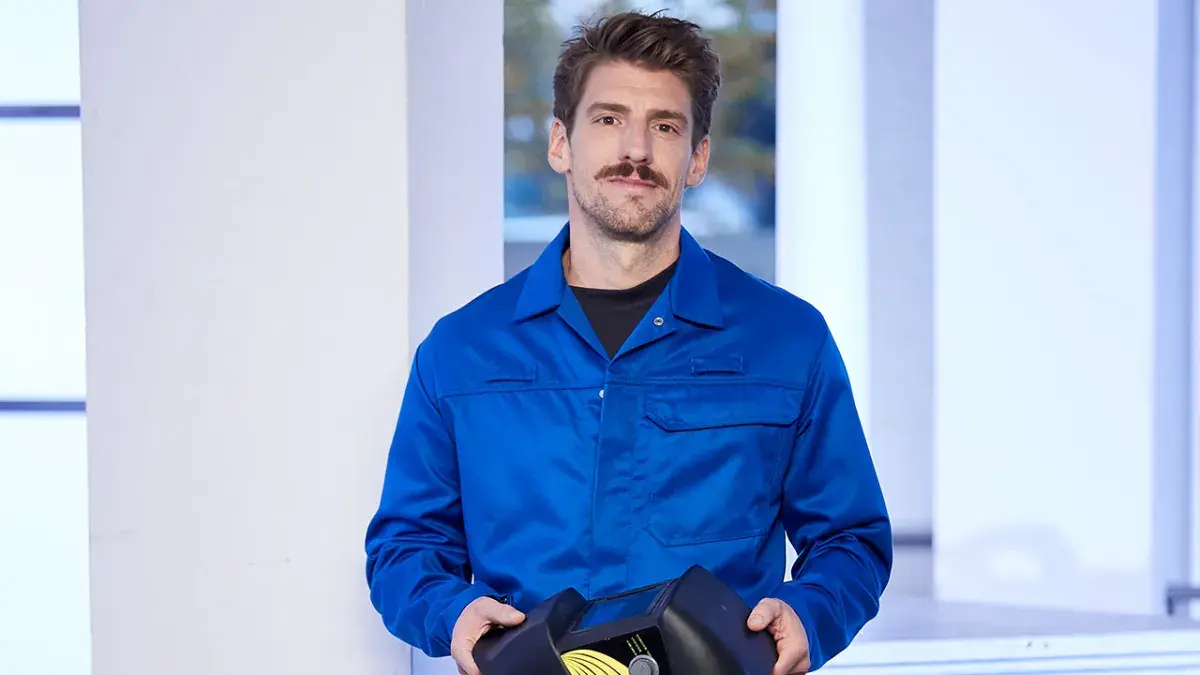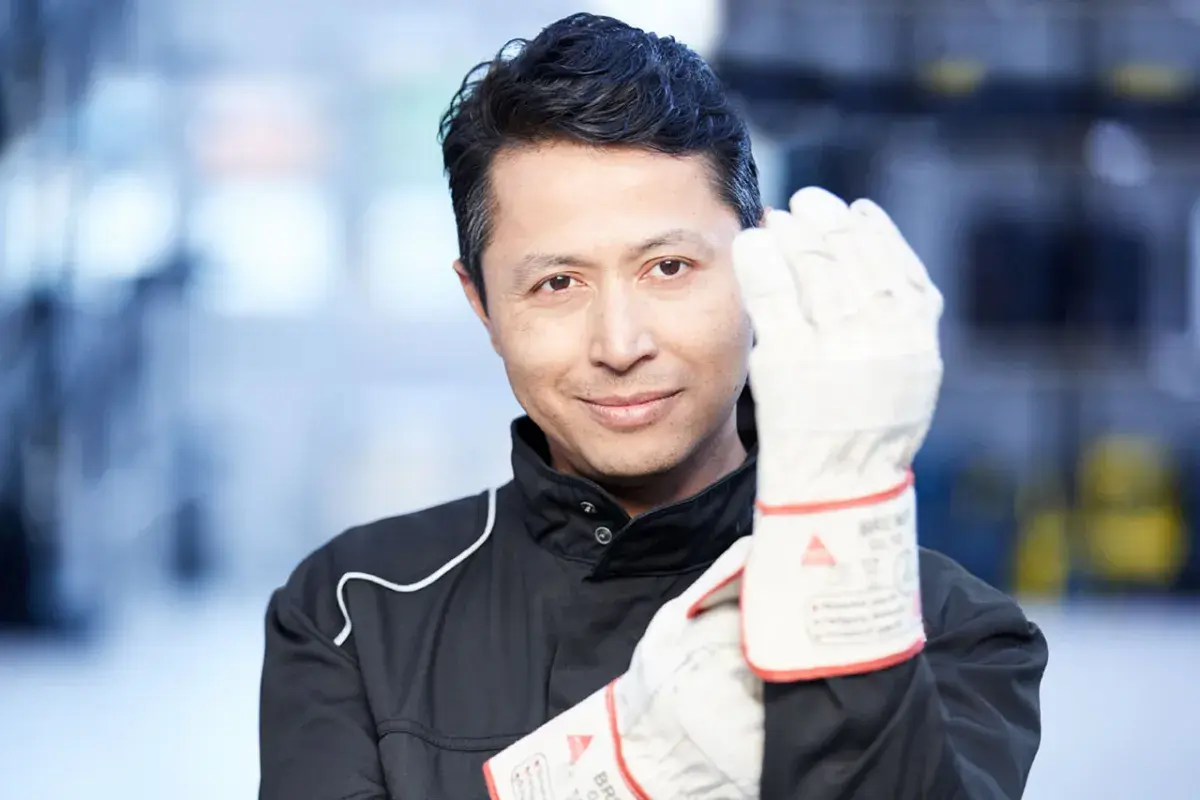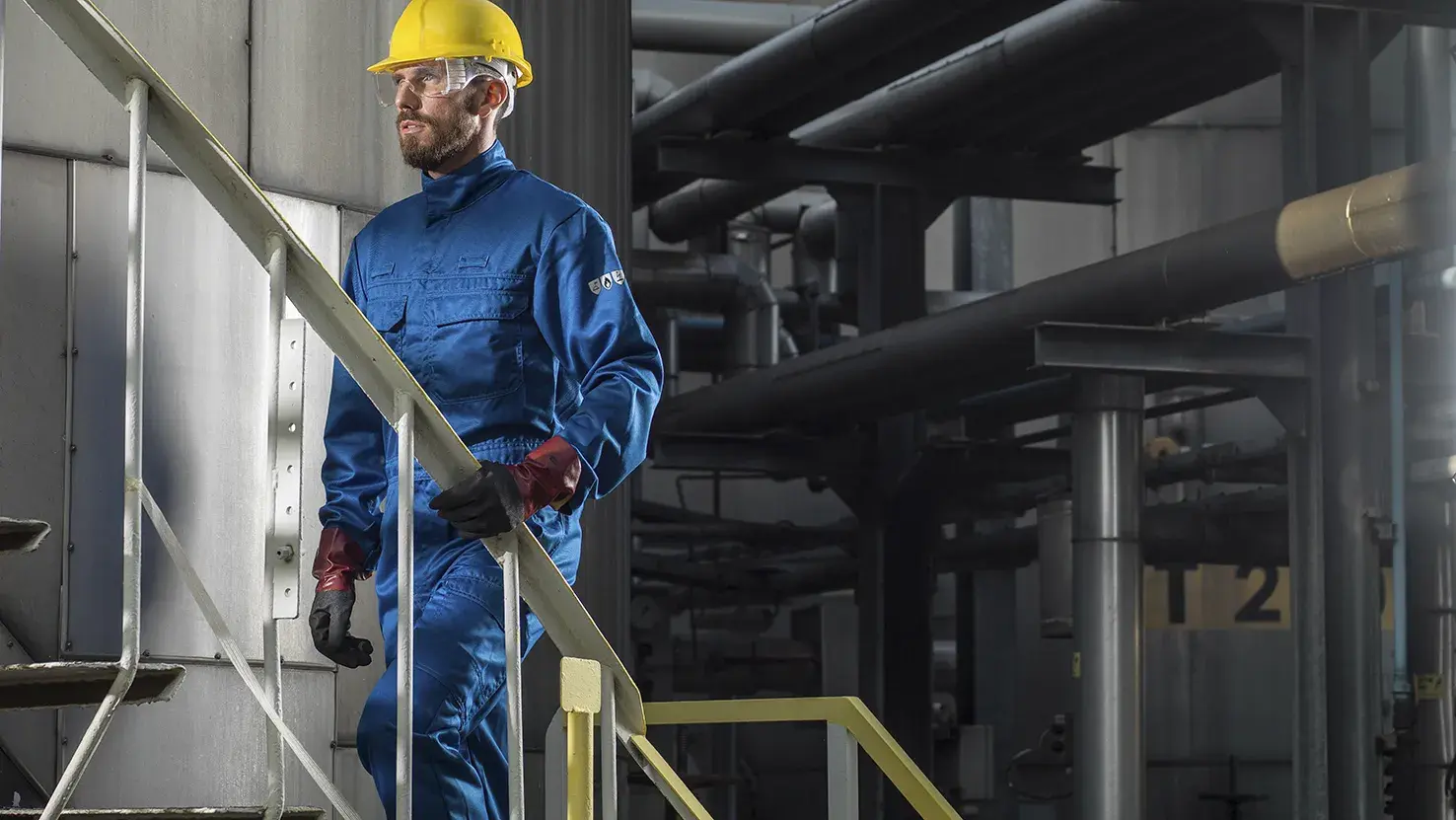Heat, flame and arc fault protection
Safely protected from open flames, radiant heat, contact heat, arc faults and molten metal splashes
Exposure to intense heat or high electrical voltage can cause burns to employees and are life threatening. Our protective clothing for work under the influence of heat, flames and arc flashes offers you a flame-resistant fabric. The fabric is also self-extinguishing. In case of heat it inflates and numerous air chambers protect the skin. In addition, the workwear is very light and comfortable to wear.
Through our own development and production, we are able to continuously test and optimize our workwear. Play it safe with our rental service!


Nomex® Comfort
Extremely lightweight fabric made of flame-resistant, extremely temperature-resistant Nomex® fibers

Nomex® Comfort Plus
Double layer protection against arc faults in all working situations
Download
Live Burn Test
FAQ
Do you have questions about heat, flame and arc flash protective clothing? We have the right answers. If you still have questions, we'll be happy to help.
How do I choose the right heat, flame and/or arc flash protective clothing?
Look for the code letters when selecting heat and flame protective clothing that is right for you. They stand for six different heat hazards and risks.
A = Protection against limited flame spread.
B = Protection from convection heat
C = Protection against radiant heat
D = Protection against heat hazards from molten aluminum splashes
E = Protection against heat hazards from molten iron splashes
F = Protection against contact heat
When do I need heat, flame and/or arc fault protection?
You always need work clothing that protects against heat and flames when colleagues come into contact with open flames, radiant heat, contact heat and small molten metal droplets for a short time during their work.
Work clothing that protects against the thermal hazards of an electric arc is needed, for example, when you are working in the low-voltage area, for example on house junction boxes, local power stations or comparable power supply systems.
The inherent protection of CWS heat and flame protective clothing does not wash out or wear away. An electric arc is a sustained gas discharge of high current density between electrical conductors that produces a very bright light, generates extremely high heat, and can cause severe burns or even be fatal. Arc faults not only occur during a short circuit, but they can also occur when live parts are disconnected (for example, insertion/removal of fuses under load). Arc faults occur comparatively rarely in practice, but require reliable protection because of the great dangers they pose.
Due to the large arc power and high temperature of the arc, there is a strong light effect with a loud bang, and flammable objects in the immediate vicinity can catch fire.
What is important about heat, flame and arc flash protective clothing?
Protection from heat, flames and arc flash is only achieved when the clothing fully covers the upper and lower body, neck, arms and legs.
A work jacket should still extend ("flap") over the pants when the wearer is standing with both arms extended above the head and bent forward so that the fingertips touch the floor.
The wrists, forearms, and ankles should also remain covered. Work pants should overlap the top of shoes and this should remain the case when walking or crawling. When do I need heat, flame and/or arc flash protection?

